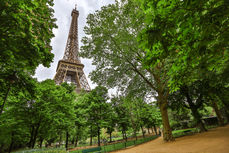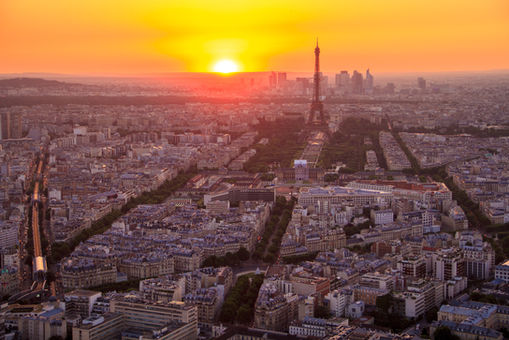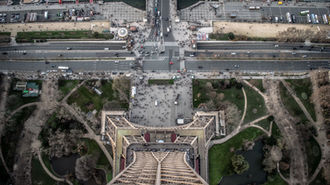
His history...
Is it really necessary to introduce you to the Eiffel Tower? We can't resist it!
The history of the tower is linked to the history of Paris and France in the 19th century. The tower was built in less than two years and was first used for the transmission of radio signals. After the Universal Exhibition, the tower was considered a symbol of France's modernity and cutting-edge technology.
Built to celebrate the centenary of the French Revolution and to demonstrate France's industrial might, it was initially considered an eyesore by many before becoming a symbol of innovation and beauty. And despite the controversies of all kinds at the time, we see that today it is unanimous!
Over the years, the Eiffel Tower has also been the scene of many historic events, such as the first broadcast of television in France in 1935 and the city of Paris' millennium celebrations in 1989.
The broadcast, more precisely on April 26, 1935, began at 8:00 p.m. and lasted approximately an hour and a half. The program included speeches from the Minister of Posts, Telegraphs and Telephones, as well as the chairman of the board of directors of the Compagnie des Compteurs. There were also musical performances and demonstrations of television technology. The broadcast was in black and white and reserved for owners of special receivers, because we forget but television was not yet widely used in France at the time.
This first broadcast was a historic event for France, because it marked the beginning of a new era of communication and entertainment for the country. Television quickly became very popular in France, despite the technical and economic difficulties linked to its implementation.
An architectural revolution in Paris...
Let's talk about this architecture characterized by its elegant and bold silhouette, which consists of four iron pillars connected by arches. The tower is 324 meters high, making it one of the largest monuments in the world. Not so high would you say? Visitors can climb the stairs or take an elevator to the top of the tower, offering panoramic views of the city of Paris, quite a few steps all the same!
It was considered an architectural innovation for its time because it represented a massive use of steel, which allowed for unprecedented height and a strong but lightweight structure, which we particularly appreciated. The use of steel in buildings was a huge advancement for engineers and architects at the time, as it allowed them to build larger and taller structures.
We obviously see that there are many similar examples of the use of steel in the construction of towers around the world, such as the Empire State Tower in New York, the CN Tower in Toronto, the Burj Khalifa Tower in Dubai and many other modern towers around the world.
The representation of the Eiffel Tower in art
Depicted time and again, this great lady is a popular subject in art, particularly in painting and photography. Since its construction, it has inspired many artists because of its unique shape and its place in the history of France.
In painting, the Eiffel Tower has been painted in many different ways, ranging from realistic portraits to abstract and surreal interpretations. Many artists chose to paint the tower in context, showing it within the Paris cityscape or depicting it as a central feature of the city.
In photography, the Eiffel Tower is also captured as an imposing monument, sometimes during the day and sometimes at night, with its lights illuminating the night sky. Photos may show the tower alone or in context with other buildings and monuments in Paris.
Finally, the Eiffel Tower is also a popular subject in decorative arts, such as woodcuts, postcards and posters, where it is often presented in a stylized or simplified manner.
It would be safe to say that the Eiffel Tower is a captivating subject for artists because of its unique shape, its symbolic role and its place in the history of France and the world. Artistic interpretations of the tower vary widely, ranging from realistic depiction to abstract artistic expression. All you have to do is try your own performance!
A visit itinerary among others
It's obvious, you'll need patience, you won't be alone, but... some advice all the same:
Come early in the morning or late in the evening to avoid crowds. Opening hours vary depending on the season, but in general the least busy hours are before 10 a.m. or after 9 p.m. in the evening.
Book your tickets online to avoid long queues. You can purchase tickets to go to the top of the tower, or tickets to access the second floor observation deck.
Take the time to explore the surroundings of the tower, such as the Trocadéro gardens, the Champ de Mars and the Musée d'Orsay, which are nearby.
Don't forget to take change for the food and drink machines located at the tower. There aren't many dining options at the tower, so it's best to bring food and water for the day.
If you go up to the top of the tower, don't forget to take a jacket or shawl as it can be chilly outside, even in summer.
Enjoy the panoramic view of Paris from the tower. It is also possible to organize a guided tour to learn more about the history and architecture of the tower.
































Address of the Eiffel Tower
Image Gallery









